Manaslu Tsum Valley and Narphu Valley Trek
Tsum Valley and Narphu Valley are two hidden gems nestled in the remote corners of the Nepal Himalayas, offering intrepid trekkers a unique and off-the-beaten-path adventure. These treks provide an opportunity to explore the rich culture, stunning landscapes, and ancient monasteries of the region while avoiding the crowds of more popular trekking routes.
Tsum Valley Trek:
The Tsum Valley, also often referred to as the “Hidden Valley,” is a pristine enclave in the Manaslu region of Nepal. This trek takes you through traditional Tibetan villages, lush forests, and terraced fields, providing a glimpse into the authentic Tibetan-Buddhist culture that has thrived here for centuries. The highlight of the Tsum Valley is the stunning Mu Gompa, a centuries-old monastery perched atop a hill, where you can immerse yourself in spiritual tranquility and enjoy panoramic mountain views.
The Tsum Valley trek also ypically takes around 17 to 21 days, depending on the chosen route and acclimatization stops. Trekkers traverse challenging terrain, cross suspension bridges over rushing rivers, and reach high-altitude passes for breathtaking vistas of the Ganesh Himal, Manaslu, and other peaks. This trek offers a rare opportunity to witness the unique customs and lifestyle of the Tsumbas, an indigenous people with a strong connection to Tibetan culture.
Nar Phu Valley Trek:
The Nar Phu Valley trek is another remote adventure that takes you into the lesser-explored corners of the Annapurna region. This trek begins from the town of Koto, branching off from the popular Annapurna Circuit route. As you ascend, the landscape transforms from lush forests to barren cliffs, and you enter the mystical Nar Phu Valley.
The trek to Nar Phu Valley offers a glimpse into the ancient Tibetan way of life. Trekkers pass through medieval villages adorned with prayer flags, visit ancient monasteries like Nar and Phu Gompas, and witness the stark beauty of the high-altitude desert landscape. The towering peaks of Kang Guru and Pisang add to the dramatic scenery.
The Nar Phu Valley trek typically spans around 16 to 20 days, with challenging high passes, like Kang La Pass and Thorong La Pass, testing your endurance and providing mesmerizing views of the Annapurna and Manaslu mountain ranges.
Both the Tsum Valley and Nar Phu Valley treks are less frequented, making them perfect for those seeking a more remote and culturally immersive trekking experience. Trekkers should be prepared for rugged trails, high altitudes, and basic accommodations. These treks are not just about the breathtaking scenery but also about the opportunity to connect with the indigenous culture and traditions that have flourished in these hidden valleys for centuries.
Itinerary
-
Day 1: Arrival at Kathmandu
Upon your arrival in Kathmandu, you will be greeted and transferred to your hotel. You can spend the rest of the day exploring the city and preparing for the trek ahead.
-
Day 2: Trek Preparation and Permit Paperwork
This day is dedicated to finalizing trek preparations and obtaining the necessary permits for the trek. You will also have some free time to explore Kathmandu and its cultural attractions
-
Day 3: Kathmandu to Arughat Bazaar to Machha Khola
You will start the day with a scenic drive from Kathmandu to Arughat Bazaar (535m), which takes approximately 5 to 6 hours. From Arughat Bazaar, you will continue the journey with a 2 to 3-hour drive to Machha Khola (930m), where you will spend the night.
-
Day 4: Machha Khola to Doban
The trekking adventure begins as you trek from Machha Khola to Doban (1,070m). This takes around 6 to 7 hours and involves walking through picturesque landscapes, crossing suspension bridges, and passing through charming villages.
-
Day 5: Doban to Philim
Today, you will trek from Doban to Philim (1,570m), which takes approximately 5 to 6 hours. Along the way, you will enjoy the scenic beauty of forests, terraced fields, and waterfalls.
-
Day 6: Philim to Chumling (Lower Tsum)
You will trek from Philim to Chumling (Lower Tsum) (2,361m) for about 6 to 7 hours. This part of the trek introduces you to the Tsum Valley region, characterized by beautiful landscapes and cultural heritage.
-
Day 7: Chumling to Chhekampar (Upper Tsum)
The trek continues from Chumling to Chhekampar (Upper Tsum) (3,010m), which takes approximately 5 to 6 hours. You will witness the unique blend of natural beauty and rich Tibetan Buddhist culture in this region.
-
Day 8: Chhekampar to Chhule-Nile
On this day, you will trek from Chhekampar to Chhule-Nile (3,361m), with a visit to the historic Milarepa Piren Phu Cave along the way. The trek takes around 6 to 7 hours, offering breathtaking views and cultural encounters.
-
Day 9: Chhule-Nile to Mu Gompa
Today’s trek takes you from Chhule-Nile to Mu Gompa (3,700m) in approximately 3 to 4 hours. You will have the opportunity to visit the Dhephyudonma Gompa (4,060m) and immerse yourself in the serene ambiance of the region.
-
Day 10: Mu Gompa to Rachen Gompa
You will trek from Mu Gompa to Rachen Gompa (3,210m), which takes around 5 to 6 hours. Along the way, you will be captivated by the scenic beauty and encounter significant monastic establishments.
-
Day 11: Rachen Gompa to Dumje
Today’s trek takes you from Rachen Gompa to Dumje (2,405m) for approximately 6 to 7 hours. The trail offers panoramic views of the surrounding peaks and takes you through quaint villages.
-
Day 12: Dumje to Lokpa (cross Ripchet)
Today’s trek will take you from Dumje to Lokpa (cross Ripchet) at an altitude of 1,570 meters. The trek will take around 6 ½ to 7 ½ hours as you walk through picturesque landscapes and cross the village of Ripchet.
-
Day 13: Lokpa to Deng
You will trek from Lokpa to Deng (1,865m) for approximately 4 to 5 hours. This part of the journey offers stunning views of the Budhi Gandaki River and the surrounding mountains.
-
Day 14: Deng to Ghap
Today, you will trek from Deng to Ghap (2,165m) for around 4 to 5 hours. The trail passes through forests of pine and rhododendron, with occasional glimpses of snow-capped peaks.
-
Day 15: Ghap to Lho
You will trek from Ghap to Lho (3,180m) for approximately 5 to 6 hours. The trail takes you through beautiful villages, terraced fields, and offers panoramic views of the Manaslu range.
-
Day 16: Lho to Sama Gaon (Ro)
Today’s trek will take you from Lho to Sama Gaon (Ro) at an altitude of 3,525 meters. The trek will take around 5 to 6 hours, and you will have the opportunity to immerse yourself in the local culture and enjoy the stunning mountain scenery.
-
Day 17: Explore day in Sama Gaon
This day is dedicated to acclimatization and exploration in Sama Gaon. You can take a short hike to explore the surrounding areas and enjoy the breathtaking views of the Manaslu range.
-
Day 18: Sama Gaon to Samdo
You will trek from Sama Gaon to Samdo (3,850m) for approximately 4 to 5 hours. The trail gradually ascends, offering magnificent views of the Manaslu and neighboring peaks.
-
Day 19: Samdo to Dharamsala (Larkya Phedi)
Today, you will trek from Samdo to Dharamsala, also known as Larkya Phedi (4,460m), which takes around 4 to 5 hours. The trail takes you through rugged terrain and offers glimpses of the snow-capped mountains.
-
Day 20: Dharamsala to Bimtang via Larkya La
This is a challenging day as you trek from Dharamsala to Bimtang (3,590m) via the Larkya La pass (5,160m). The trek will take around 7 to 8 hours and rewards you with stunning panoramic views of the Himalayas.
-
Day 21: Bimtang to Tilje
You will trek from Bimtang to Tilje (2,300m) for approximately 7 to 8 hours. The trail descends through alpine forests, meadows, and charming villages, providing a mix of natural beauty and cultural experiences.
-
Day 22: Tilje to Koto
Today’s trek takes you from Tilje to Koto (2,600m) and will take around 5 to 6 hours. You will walk through lush forests, cross suspension bridges, and pass through beautiful settlements.
-
Day 23: Koto to Meta
You will trek from Koto to Meta (3,560m) for approximately 8 to 9 hours. The trail leads you through the Narphu Valley, offering breathtaking views of the mountains and rugged landscapes.
-
Day 24: Meta to Phu Village
Today’s trek takes you from Meta to Phu Village (4,080m) and will take around 5 to 6 hours. You will pass through dense forests, cross suspension bridges, and arrive at the culturally rich and remote village of Phu.
-
Day 25: Rest day and short trekking in Phu Village
This day is dedicated to rest and exploration in Phu Village. You can take a short hike around the village, interact with the locals, and immerse yourself in the unique culture and traditions of the region.
-
Day 26: Trek down to Yunkar Gompa
You will trek down from Phu Village to Yunkar Gompa (3,540m) for approximately 6 to 7 hours. The trail offers beautiful views of the surrounding landscapes as you descend into the valley.
-
Day 27: Trek to Nar Village
Today’s trek takes you from Yunkar Gompa to Nar Village (4,110m) and will take around 4 to 5 hours. You will reach the stunning village of Nar, known for its ancient monasteries and traditional way of life.
-
Day 28: Hike around Nar Village
This day is set aside for exploration and acclimatization in Nar Village. You can take a hike to explore the nearby areas, visit the monasteries, and appreciate the unique culture and architecture of the region.
-
Day 29: Trek to Kangla Phedi
You will trek from Nar Village to Kangla Phedi (4,530m) for approximately 4 to 5 hours. The trail gradually ascends, and you will be rewarded with spectacular mountain views as you approach the base of Kangla Pass.
-
Day 30: Trek to Kangla Pass and Nawal Village
Today is a challenging day as you trek to Kangla Pass (5,320m) and then descend to Nawal Village (3,657m). The trek will take around 8 to 9 hours and offers stunning views of the surrounding peaks.
-
Day 31: Trek to Manang via Bhraka Monastery
You will trek from Nawal Village to Manang (3,540m) via the Bhraka Monastery (3,439m). The trek will take approximately a full day of walking, and you will pass through beautiful landscapes and cultural sites.
-
Day 32: Rest Day in Manang
This day is dedicated to rest and acclimatization in Manang. You can explore the town, visit the monasteries, and enjoy the stunning views of the Annapurna range.
-
Day 33: Trek to Yak Kharka
You will trek from Manang to Yak Kharka (4,018m) for approximately 5 to 6 hours. The trail gradually ascends, and you will pass through alpine meadows and grazing lands for yaks.
-
Day 34: Trek to Thorong Phedi
Today’s trek takes you from Yak Kharka to Thorong Phedi (4,450m) and will take around 5 to 6 hours. You will approach the base of Thorong La Pass, and the surrounding landscape becomes more rugged and barren.
-
Day 35: Trek to Muktinath via Thorong La Pass
This is a challenging and rewarding day as you trek from Thorong Phedi to Muktinath (3,800m) via Thorong La Pass (5,416m). The trek to the pass usually starts early in the morning to ensure a safe crossing. After reaching the pass, you will descend to Muktinath, a sacred pilgrimage site for both Hindus and Buddhists.
-
Day 36: Trek to Jomsom
You will trek from Muktinath to Jomsom (2,720m) for approximately 5 to 6 hours. The trail passes through the arid landscapes of the Mustang region, with stunning views of Nilgiri and Dhaulagiri mountains.
-
Day 37: Flight from Jomsom to Pokhara
You will take a scenic flight from Jomsom to Pokhara, which takes around 20 minutes. After reaching Pokhara, you can spend the day relaxing, exploring the lakeside area, and celebrating the completion of your trek.
-
Day 38: Pokhara to Kathmandu
You will drive or take a flight from Pokhara to Kathmandu. Upon reaching Kathmandu, you can rest, explore the city, do some souvenir shopping, and enjoy a farewell dinner to celebrate the successful completion of your trek.
-
Day 39: Departure from Kathmandu
It’s time to say goodbye to Nepal as you prepare for your departure. You will be transferred to the airport for your onward journey, taking back memories of the incredible Manaslu Tsum Valley and Narphu Valley Trek.
Please note that the itinerary provided is a general guideline and can be subject to changes due to weather conditions, the pace of the trek, the group’s physical fitness, and other factors. It’s always advisable to consult with a local trekking agency or guide to plan your trek and get the most updated and accurate information.
Include / Exclude
Cost Includes:
-
- Airport Pick-up and Drop Off,
- Licensed and trained trekking guides,
- potters for carrying goods and supplies,
- Meal on full board (breakfast, lunch, dinner) basis during the trek
- 3 Nights Accommodation in the 3 Star Hotel in Kathmandu with B & B. (Bed & Breakfast) on Twin Sharing Basis.
- All accommodation on Tent during the trek on sharing Basis.
- All meals and hot beverages during the trek.
- Transportation to and from trail head by Private and Sharing Transport
- All necessary documents and permits for trekking (where applicable)
- National Park/Conservation Area entry Permit, Insurance, and
equipment for the staffs. - Coordination of quick Rescue service (Costs covered by your Insurance Plan)
- Trekking staffs wages etc.
- Welcome dinner in a Nepali Cultural Dance restaurant in Kathmandu.
- Trekking Map, T-shirt, and Trekking certificate.
- Exclusive of Medical Kit Bag
- All Government and local Taxes
- International Flight ticket re-confirmation.
- Meals will be Start when your Trek starts.
- Domestic Flights
- Domestic Flights for Trekking Guide.
- Trekking Staff Insurance of $10,000 Per Person.
Cost Excludes:
- International Airfares,
- Travel/Trekking Insurance,
- Excess baggage charges More than 16kg and hand bag more than 5 kg in domestic flights.
- Visa fees.
- Airport Departure Taxes.
- Drinks (Cold and Alcoholic) Rescue charge.
- Tips for The staffs.
- Expenses of Personnel nature and Permit and Liaison officer fee (where Applicable.
- Meals during stay in the Kathmandu
- Extra Domestic Ticket of Jomsom, Pokhara etc.
- Extra Hotel in Kathmandu and Pokhara
Price per person
Usefull Information
The Manaslu Tsum Valley and Narphu Valley Trek is a challenging and adventurous trek that takes you through remote and culturally rich regions in Nepal. Here is some additional information about the trek:
- Location: The trek is located in the Manaslu region of Nepal, which is in the northern part of the country. The trail takes you through the Manaslu Conservation Area, Tsum Valley, and Narphu Valley.
- Trek Duration: The trek usually takes around 21 to 25 days to complete, depending on the specific itinerary and acclimatization days included.
- Permits: To undertake the Manaslu Tsum Valley and Narphu Valley Trek, you will need special permits. These include the Manaslu Restricted Area Permit, Manaslu Conservation Area Permit (MCAP), Annapurna Conservation Area Permit (ACAP), and Tsum Valley Restricted Area Permit.
- Accommodation: During the trek, you will stay in teahouses or lodges along the trail. These basic accommodations provide a bed, blankets, and meals. However, as you reach more remote areas, the facilities may become more basic.
- Altitude and Acclimatization: The trek involves gaining significant altitude, with the highest point being the Thorong La Pass at 5,416 meters. It’s important to take proper acclimatization days and ascend gradually to minimize the risk of altitude sickness.
- Scenery and Highlights: The trek offers diverse and stunning landscapes, including lush forests, terraced fields, glacial valleys, and snow-capped peaks. The highlights of the trek include the majestic views of Mount Manaslu (8,163m), exploration of the culturally rich Tsum Valley, crossing the challenging Thorong La Pass, and the unique cultural experiences in Narphu Valley.
- Difficulty Level: The Manaslu Tsum Valley and Narphu Valley Trek is considered a challenging trek and requires a good level of physical fitness and endurance. The trail involves steep ascents and descents, long walking hours, and high altitude sections. Prior trekking experience is recommended.
- Best Time to Trek: The ideal time for this trek is during the spring (March to May) and autumn (September to November) seasons. These months offer stable weather, clear skies, and favorable trekking conditions. However, it’s essential to check the weather and trail conditions before planning your trek.
It is highly recommended to undertake this trek with the assistance of a local trekking agency or a qualified guide who can provide proper guidance, support, and ensure your safety throughout the journey. They can also help with logistics, permits, and accommodation arrangements.
Equipment List
FAQs
-
 Best Seasons March to May, September to November
Best Seasons March to May, September to November -
 Group Size 2-20
Group Size 2-20 -
 Duration 35 DAYS BOOKING OPEN
Duration 35 DAYS BOOKING OPEN -
 Maximum Altitude 5416M
Maximum Altitude 5416M -
 Trek Difficulty Challenging
Trek Difficulty Challenging

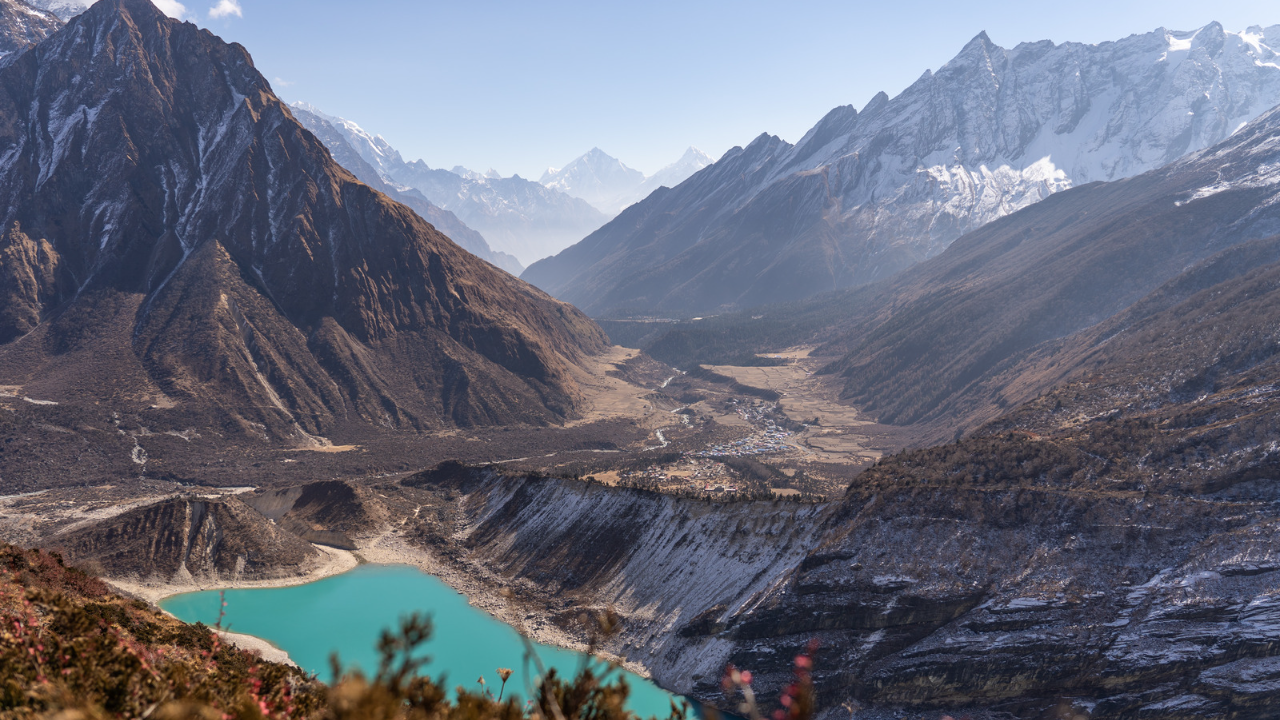


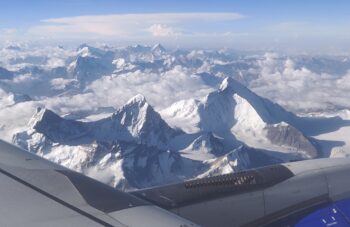
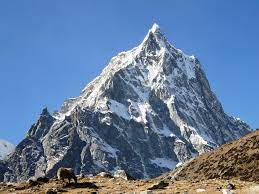
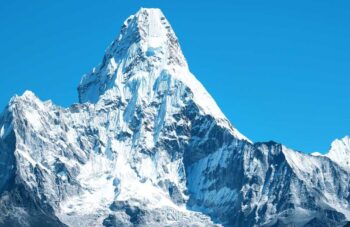
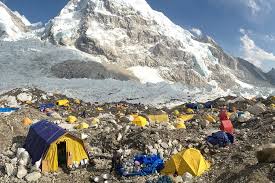
Leave a Reply